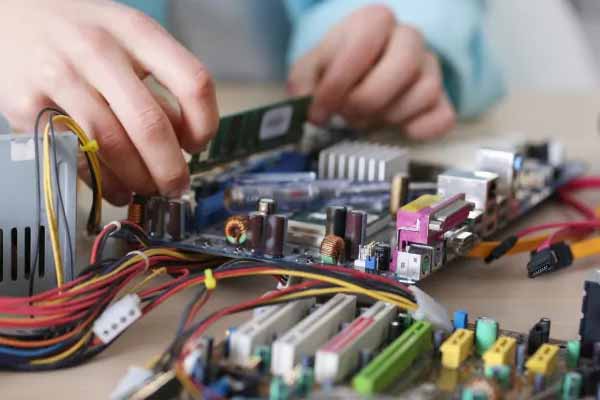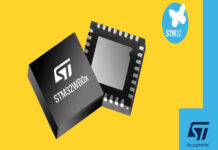Design development is recent times is critical with it beholds the argument of further assessing standards to comply to make the process safe. Design development and processes at every level brings standard considerations especially for electronic equipment. The real venture for design engineers today is the way electronic equipment is build given the conditions and market demand. Hence the regulations of power-based products and components become even more critical while defining today’s design development. For years and can be mentioned as decades, International Electrotechnical Commission (IEC) has scrutinized how to design information technology equipment and audio/video products for safety. Given the changing equation and dynamics happening the technological world today, the new IEC 62368-1 standard sits appropriate as existing IEC 60950-1 (information and communication technology equipment) and IEC 60065 (audio and video equipment) is less complementing to newer technologies and innovations.
A Quick Overview of 60950-1 or 60065
The hazard-based product-safety standard for ICT and AV equipment has been on the edge where IEC 60950-1 for ICT equipment and IEC 60065 for AV equipment has already been there.
- IEC 60950-1 includes the basic requirements for the safety of information technology equipment.
These principles are not an alternative to the detailed requirements of this standard but are intended to provide designers with an appreciation of the basis of these requirements. Where the equipment involves technologies and materials or methods of construction not specifically covered, the design of the equipment should provide a level of safety not less than those described in these principles of safety.
The following priorities should be observed in determining what design measures to adopt:
- Where possible, specify design criteria that will eliminate, reduce or guard against hazards;
- Where the above is not practicable because the functioning of the equipment would be impaired, specify the use of protective means independent of the equipment, such as personal protective equipment (which is not specified in this standard);
- Where neither of the above measures is practicable, or in addition to those measures, specify the provision of markings and instructions regarding the residual risks.
There are two types of persons whose safety needs to be considered: USERS (or OPERATORS) and SERVICE PERSONS.
USER is the term applied to all persons other than SERVICE PERSONS. Requirements for protection should assume that USERS are not trained to identify hazards, but will not intentionally create a hazardous situation. Consequently, the requirements will provide protection for cleaners and casual visitors as well as the assigned USERS. In general, USERS should not have access to hazardous parts, and to this end, such parts should only be in SERVICE ACCESS AREAS or in equipment located in RESTRICTED ACCESS LOCATIONS. When USERS are admitted to RESTRICTED ACCESS LOCATIONS they shall be suitably instructed. SERVICE PERSONS are expected to use their training and skill to avoid possible injury to themselves and others due to obvious hazards that exist in SERVICE ACCESS AREAS of the equipment or on equipment located in RESTRICTED ACCESS LOCATIONS. However, SERVICE PERSONS should be protected against unexpected hazards. This can be done by, for example, locating parts that need to be accessible for servicing away from electrical and mechanical hazards, providing shields to avoid accidental contact with hazardous parts, and providing labels or instructions to warn personnel about any residual risk. Information about potential hazards can be marked on the equipment or provided with the equipment, depending on the likelihood and severity of the injury, or made available for SERVICE PERSONS. In general, USERS shall not be exposed to hazards likely to cause injury, and information provided for USERS should primarily aim at avoiding misuse and situations likely to create hazards, such as connection to the wrong power source and replacement of fuses by incorrect types. MOVABLE EQUIPMENT is considered to present a slightly increased risk of shock, due to possible extra strain on the supply cord leading to rupture of the earthing conductor. With HAND-HELD EQUIPMENT, this risk is increased; wear on the cord is more likely, and further hazards could arise if the units were dropped. TRANSPORTABLE EQUIPMENT introduces a further factor because it can be used and carried in any orientation; if a small metallic object enters an opening in the ENCLOSURE it can move around inside the equipment, possibly creating a hazard.
On the other hand, IEC 60065:2014 applies to electronic apparatus designed to be fed from the mains, from a supply apparatus, from batteries or from remote power feeding and intended for reception, generation, recording or reproduction of audio, video and associated signals. It also applies to apparatus designed to be used exclusively in combination with the above-mentioned apparatus. This standard primarily concerns apparatus intended for household and similar general use but which may also be used in places of public assembly such as schools, theatres, places of worship and the workplace professional apparatus intended for use as described above is also covered unless falling specifically within the scope of other standards.
This standard:
- concerns only safety aspects of the above apparatus;
- it does not concern other matters, such as style or performance. This standard applies to the above-mentioned apparatus if designed to be connected to the telecommunication network or similar network, for example by means of an integrated modem. This eighth edition cancels and replaces the seventh edition published in 2001 including its Amendment 1 (2005) and Amendment 2 (2010). It constitutes a technical revision.
The principal changes in this edition as compared with the seventh edition are as follows:
- new requirements for wall and ceiling mounting means;
- new requirements for coin/button cell batteries;
- all notes have been reviewed to comply with the new directives;
- addition of requirements for LEDs;
- requirements for creepage distances are aligned with IEC 60950-1 and a change in optocoupler requirements.
What is IEC 62368-1?
IEC 62368-1 was adopted to replace older standards with one which defines circuit protection for the safety of electrical and electronic ICT, AV, and IoT equipment with a rated voltage not exceeding 600 volts (Figure 1). Designed to protect people who install, maintain, and use such equipment, the standard also reflects the HBSE approach engineers now take to safety engineering. HBSE replaces the previous prescriptive engineering approach—which laid out a set of rules to which protection circuits should adhere—with one that considers the hazards to which a product is likely to be exposed. The result is safety circuits that protect the user even if the product fails when it is subjected to one of the identified hazards.

IEC 62368-1 applies to not only the end-user product but also to the components and subsystems (such as power supplies) from which it is constructed. For an unspecified period, the new standard temporarily allows for the reuse of designs and sub-assemblies that were compliant with the older standards. Engineers are expected to adopt the new standard for key markets such as North America, the U.K., Japan, and Australia/New Zealand.
Circuit protection for people
IEC 62383-1 compliance requires an engineer to employ an HBSE methodology. This means:
- Identifying the energy sources (ESs) used by the product
- Measuring the energy levels produced by those sources
- Determining whether the energy from the sources is hazardous
- Classifying the level of hazard
- Identifying whether the hazard could cause injury or fire
- Determining appropriate safeguard schemes to:
- Protect persons against pain and injury from the classified hazardsReduce the likelihood of injury or property damage due to fire originating from a fault within the equipment
- Measuring the effectiveness of those safeguards
Scope And Criteria With IEC 62368-1
The scope of the new standard is fairly broad and includes all applications that were previously covered under different standards, or not covered at all. This includes electronic equipment up to 600 volts such as point-of-sale, banking, and other telecommunication and office equipment; speakers, surveillance cameras, smart home devices, and other audio/video equipment; and smart Internet of Things (IoT) devices, laptops, mobile devices, gaming systems, and other battery-powered electronic devices. Although IEC 62368-1 has been in effect for years, designers had a choice of whether to comply with 60950 or 60065 over 62368-1 depending on the application, but that is no longer possible. Now, the hazard-based approach takes into consideration how a device is designed and where it will be used to determine testing and evaluation criteria, as well as which protection components should be used within the device. While the evolution of the power-based standards may seem complicated, this new approach allows for greater safety and design flexibility. COMPLIANCE TESTING Protection components are often used in designs to help increase long-term reliability and to comply with equipment tests such as IEC 62368-1. In order to determine the parameters of some of the tests, it is necessary to determine the overvoltage category that applies. The overvoltage category is based on where the device connects to the electrical grid—the closer the proximity to the grid, the higher the category and the hazard. For example, an electric meter on the outside of the house that is connected by a service wire to a transformer is considered Overvoltage Category IV, while the electric breaker panel inside a house would be in a lower Overvoltage Category. Personal devices such as PCs, routers, notebooks, tablets, and their power supplies fall within Overvoltage Category II. Using the Overvoltage Category along with the line voltage, engineers can determine the withstand voltage rating. For power adapters connecting to 120 volt outlets, the withstand voltage rating is 1500 volts. But for adapters connecting to 240 volt outlets, the withstand voltage rating increases to 2500 volts. This rating is an important component when it comes to part selection and testing criteria. The new standard also includes three tests related to the use of varistors and gas discharge tubes (GDTs) for surge protection, which was not included in older standards. As varistors are exposed to surge events they can wear out over time, eventually becoming a hazard themselves. IEC 62368-1 now refers to varistors as a possible ignition source, which is why the additional tests have been included.
“As a new regulation, IEC 62368-1, became the single default standard on December 20, 2020, designers no longer can choose to comply with either the information/communication technology standard or the audio/video equipment standard. The boundaries between information/communications and audio/video technology have blurred. Thus, the IEC 62368-1 hazards-based safety engineering standard applies to a broad scope of applications.
“Another important aspect is that, like the outgoing standards, 62368-1 applies not only to the end-user product but also to components and subsystems such as power supplies. Product manufacturers need to bear this in mind to be sure of procuring acceptable parts throughout the transition period between now and December 2020, and in the subsequent period when only 62368-1 will apply.
References: https://webstore.iec.ch/publication/494 | https://webstore.iec.ch/preview/info_iec60950-1%7Bed2.0%7Den_d.pdf | https://www.tti.com/content/dam/ttiinc/manufacturers/littelfuse/PDF/IEC-Global-Safety-Standard-White-Paper.pdf | https://www.cui.com/catalog/resource/iec-62368-1-an-introduction-to-the-new-safety-standard-for-ict-and-av-equipment















